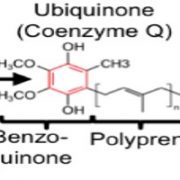
Questions about Coenzyme Q? A New Genetic/Metabolic Study Has Answers
The Plant Cell, The Plant Cell: In BriefAnyone who works on plants should be dazzled by the complexity and versatility of plant metabolism. In fact, why restrict this to plant biologists? We all love plant metabolites, whether we’re enjoying the caffeine in our morning cup of tea, or the capsaicin heat in the pepper flakes on our lunchtime…
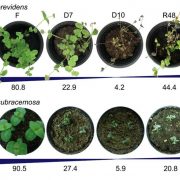
How resurrection plants survive being hung out to dry
The Plant Cell, The Plant Cell: In BriefResurrection plants have the unique ability to survive extreme dehydration (desiccation), lying dormant for months or sometimes years until rehydration is possible. This formidable survival strategy has independently evolved several times across the land plant phylogeny, and several phylogenetically…
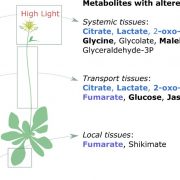
Highlighting the fast signals that establish remote metabolite profiles
Plant Physiology, Plant Physiology: News and ViewsBy Amna Mhamdi and Scott Hayes
They say you can get too much of a good thing, and for plants that is certainly true. Light is essential for growth, but excessive light causes an overloading of the plant’s photosynthetic machinery. This excess energy can spill out and, through formation of reactive…

Spot the Difference: Distinct Cargo-Specific Functionality of Two Closely Related SNAREs
Plant Physiology, Plant Physiology: News and ViewsExocytosis is a form of an active transport in which vesicles fuse with the plasma membrane. This vesicle transport secretes soluble cargo proteins and polysaccharides into the apoplast, but also delivers membrane lipids and transmembrane proteins to the plasma membrane. Vesicle trafficking is initiated…
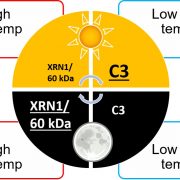
Alternative Splice Variant Sheds Light on Temperature Acclimation in Algae
Plant Physiology, Plant Physiology: News and ViewsClimate change is a potent environmental force that all living organisms must contend with. This is especially true for photosynthetic, microalgae that are forced to acclimate to ever changing water temperatures and coordinate changes in their physiology and growth rates (Singh and Singh, 2015). These…
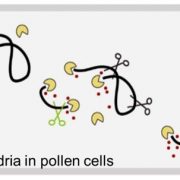
Discovery of mitochondrial endonucleases
Plant Physiology, Plant Physiology: News and ViewsProkaryotic endosymbiont-derived organelles (i.e. mitochondria and chloroplasts), contain their own genomes and the copy number of organelle genomes per cell is high; indeed, a previous study calculated that in Arabidopsis thaliana, each cell has 1000 to 1700 copies of the chloroplast genome (Zoschke…
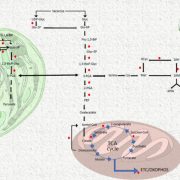
Hydrogen Cyanide Regulation by S-Cyanylation
Plant Physiology, Plant Physiology: On The InsideDespite its toxicity, cyanide has been proposed to act as a regulator of several biological processes such as seed dormancy and germination, resistance to fungal and viral infection. Arabidopsis null mutants of the mitochondrial enzyme β-CYANOALANINE SYNTHASE (CAS-C1) accumulate cyanide to apparently…
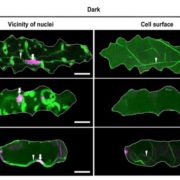
Dark-Induced Nuclear Positioning in Leaf Cells
Plant Physiology, Plant Physiology: On The InsideThe appropriate spatial arrangement of nuclei is essential for various cellular activities during cell division, growth, migration, and differentiation in eukaryotes. In plants, nuclear positioning is also required for proper responses to environmental stimuli, including pathogen infection, touch, temperature,…
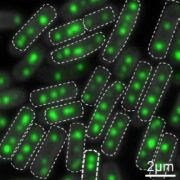
New Insights into Carboxysomes
Plant Physiology, Plant Physiology: On The InsideDespite its essential role in photosynthetic carbon fixation, ribulose 1,5 bisphosphate carboxylase/oxygenase (Rubisco) is a relatively inefficient enzyme, due in part to its inability to discriminate between CO2 and O2 as substrates. To suppress the oxygenase reaction and enhance the carboxylase activity…

